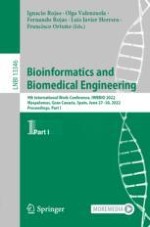2022 | OriginalPaper | Buchkapitel
Automated TTC Image-Based Analysis of Mouse Brain Lesions
verfasst von : Gerasimos Damigos, Nefeli Zerva, Angelos Pavlopoulos, Konstantina Chatzikyrkou, Argyro Koumenti, Konstantinos Moustakas, Constantinos Pantos, Iordanis Mourouzis, Athanasios Lourbopoulos, Evangelia I. Zacharaki
Erschienen in: Bioinformatics and Biomedical Engineering
Aktivieren Sie unsere intelligente Suche, um passende Fachinhalte oder Patente zu finden.
Wählen Sie Textabschnitte aus um mit Künstlicher Intelligenz passenden Patente zu finden. powered by
Markieren Sie Textabschnitte, um KI-gestützt weitere passende Inhalte zu finden. powered by
